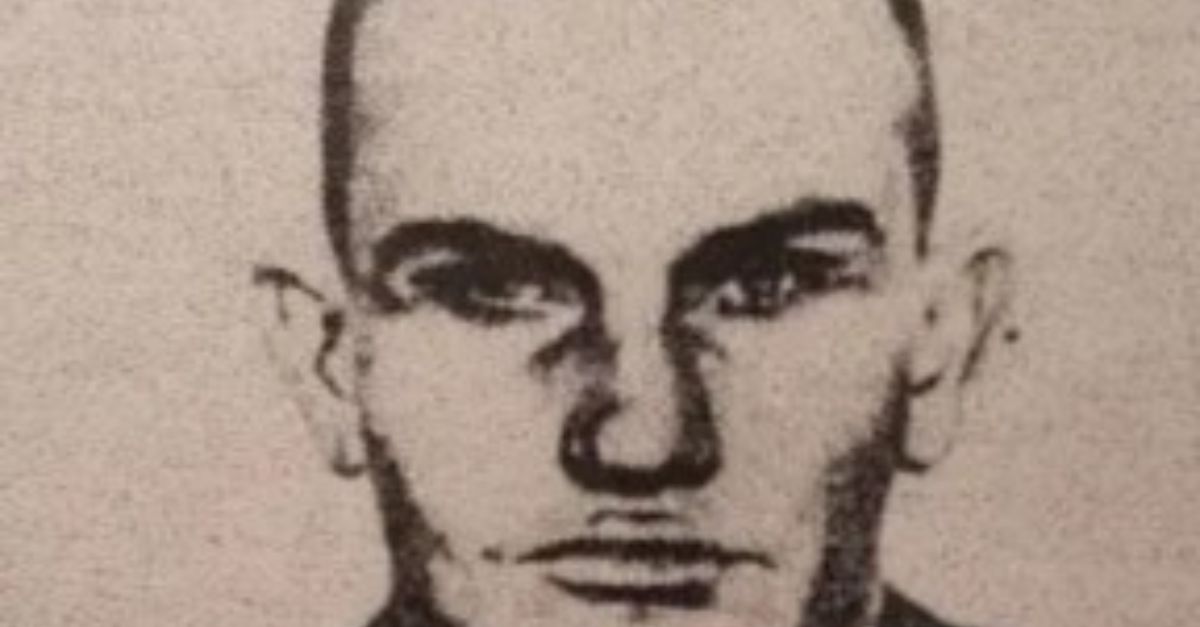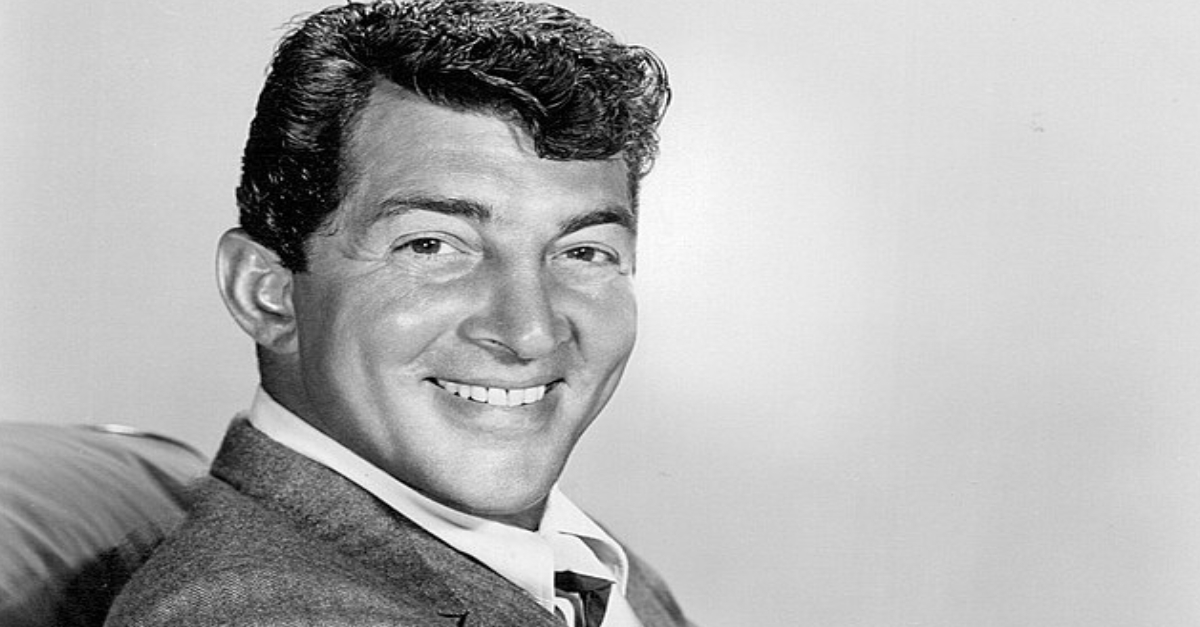He Didn’t Go Quietly
Harry Tracy’s life played out like a runaway train. In 1902, his desperate spree across Oregon and Washington ended with a finale that marked the end of the Wild West.

Born Into Hardship In Wisconsin
Harry Tracy was born Harry Severns in 1875 in Wisconsin. Confirmed records do not provide details about his childhood, family life, or education. Since reliable documentation of his early years is lacking, we’re only left with accounts of his criminal activity from adulthood.
 Jeff the quiet, Wikimedia Commons
Jeff the quiet, Wikimedia Commons
Born Into Hardship In Wisconsin (Cont.)
Rumors linked him to Butch Cassidy’s Hole in the Wall Gang, though no proof exists. In 1898, a gunfight at Brown’s Park left posse member Valentine Hoy dead. Arrests followed, but Tracy repeatedly managed to escape custody.
 Unknown authorUnknown author, Wikimedia Commons
Unknown authorUnknown author, Wikimedia Commons
Trouble With The Law As A Teenager
During his teenage years, Tracy was arrested for theft and horse stealing, for which he did his time (according to records). These documented incidents provide the earliest clear evidence of his criminal path before his move west deepened his involvement in more serious crimes.
 Astral Films, Harry Tracy, Desperado (1982)
Astral Films, Harry Tracy, Desperado (1982)
Journey Toward The Western Frontier
The 1890s marked Tracy’s departure from Wisconsin. He became active in Colorado, including Brown’s Park, before drifting toward Wyoming. Records confirm his use of false names to mask his identity. His wandering reflected the frontier era, when open spaces still offered escape before lawmen tightened control.
 Pnickell at English Wikipedia, Wikimedia Commons
Pnickell at English Wikipedia, Wikimedia Commons
First Arrests And Prison Break Attempts
Trouble found him again in Utah, where he was caught stealing cattle and robbing. Jail never managed to keep him contained, though. In Colorado, he literally sawed through his cell bars to escape. His reputation for boldness and elusiveness steadily grew during these years.
 Astral Films, Harry Tracy, Desperado (1982)
Astral Films, Harry Tracy, Desperado (1982)
First Arrests And Prison Break Attempts (Cont.)
By 1898, Tracy and his accomplice, David Lant, were captured after the Brown’s Park gunfight, but broke out of Routt County Jail in Colorado’s Hahns Peak Village. They were later recaptured, moved to Aspen’s jail, and escaped once more before Tracy drifted toward Washington and Oregon.
Meeting David Merrill Behind Bars
Oregon’s penitentiary gave Tracy a new ally in David Merrill, an outlaw with a violent past. Their collaboration inside prison became well documented, and together they formed a partnership that would later lead to one of the most notorious escapes in Oregon history.
 Astral Films, Harry Tracy, Desperado (1982)
Astral Films, Harry Tracy, Desperado (1982)
Meeting David Merrill Behind Bars (Cont.)
Tracy and Merrill formed a plan that focused on learning guard routines by identifying weak points and securing smuggled tools. Their preparations culminated in June 1902 when Oregon’s penitentiary witnessed the most infamous escape in state history. This propelled both men into national headlines.
 Astral Films, Harry Tracy, Desperado (1982)
Astral Films, Harry Tracy, Desperado (1982)
The Oregon Penitentiary Sentence
Salem prison became Tracy’s new home after his conviction for another armed robbery. He was incarcerated there in the years before 1902. Reports note that he obtained tools from smuggled sources, which later aided his planning for a daring escape.
 Unknown authorUnknown author, Wikimedia Commons
Unknown authorUnknown author, Wikimedia Commons
The Infamous Jailbreak Of 1902
June 9, 1902, turned into Oregon’s nightmare. Tracy and Merrill blasted their way out of the penitentiary. Three guards were killed in the chaos. Rifles, revolvers, and ammunition were seized. Shockwaves spread across the state as newspapers rapidly reported the prison break.
 Unknown authorUnknown author, Wikimedia Commons
Unknown authorUnknown author, Wikimedia Commons
The Infamous Jailbreak Of 1902 (Cont.)
Freedom didn’t mean hiding quietly. The pair stormed through Salem farmland, stealing food and clothes from houses. Residents spread word of sightings, sparking panic. The governor ordered sheriffs and deputies into full pursuit. Newspapers wasted no time labeling it the boldest prison escape Oregon had ever seen.
 Philip Halling , Wikimedia Commons
Philip Halling , Wikimedia Commons
Forming An Outlaw Partnership
Out on the run, Tracy and Merrill moved like soldiers. They raided barns and farmhouses to seize supplies. Their teamwork looked practiced, almost military-like. Local farmers reported sightings and expressed fear, as Tracy and Merrill were considered more dangerous than the lawmen pursuing them.
 Astral Films, Harry Tracy, Desperado (1982)
Astral Films, Harry Tracy, Desperado (1982)
The Deadly Fallout With Merrill
The partnership didn’t last. Accounts note rising tension, but no clear motive has ever been confirmed. Tracy ultimately killed Merrill, whose body was discovered near Napavine, Washington. From that moment onward, Tracy faced the relentless law entirely on his own.
 Astral Films, Harry Tracy, Desperado (1982)
Astral Films, Harry Tracy, Desperado (1982)
Robberies Across Oregon
On Oregon’s backroads, Tracy ruled like a storm. A wagon might lose its goods, a rider his horse, or a passerby his courage under a revolver’s stare. Villages stayed uneasy, glancing toward empty trails, never sure if he was miles away or right behind.
 mypubliclands, Wikimedia Commons
mypubliclands, Wikimedia Commons
Gunfights That Spread Fear
Deputies who tried to stop him sometimes lost their lives in clashes. His movements across Oregon included rural raids that spread fear among farming communities. Each confrontation reinforced his reputation as a violent fugitive who was willing to kill rather than surrender.
 Astral Films, Harry Tracy, Desperado (1982)
Astral Films, Harry Tracy, Desperado (1982)
Sheriffs Organize To Capture Tracy
Sheriffs in multiple counties knew lone chases wouldn’t work. They organized large posses to coordinate efforts throughout Oregon. Rewards climbed quickly into the thousands. Yet, no matter how tightly the net closed, Tracy always managed to find openings to slip through.
 Astral Films, Harry Tracy, Desperado (1982)
Astral Films, Harry Tracy, Desperado (1982)
Panic Grips Oregon Towns
Rumors of his approach spread faster than official notices. Families packed up and fled their farms, with the hope of avoiding a sudden raid. Fear ran deep in the Willamette Valley, and ordinary routines bent under the weight of uncertainty and anxiety.
Tracy’s Escapes Through Forests And Farms
Thick forests offered Tracy hiding spots that no sheriff could easily breach. Barns sometimes became makeshift shelters, and locals, forced at gunpoint, provided food and fresh horses. These tactics let him outlast search parties for weeks.
 BLM Oregon & Washington, Wikimedia Commons
BLM Oregon & Washington, Wikimedia Commons
The Press Turns Him Into A Legend
Oregon newspapers couldn’t get enough of Harry Tracy. Headlines paired him with Jesse James and Billy the Kid, even though his offenses were recent and local. The “last outlaw” label spread quickly as dramatic reporting transformed his violent escape into a nationwide spectacle.
 Daniel Hass, Wikimedia Commons
Daniel Hass, Wikimedia Commons
The Press Turns Him Into A Legend (Cont.)
Media coverage stretched beyond Oregon. Some reports exaggerated his aim and cleverness by casting him as a folk hero instead of a killer. The Seattle Daily Times quipped, “Jesse James, compared with Tracy, is a Sunday school teacher”.
 Book edited and compiled by Alfred D. Bowen. The photos are uncredited., Wikimedia Commons
Book edited and compiled by Alfred D. Bowen. The photos are uncredited., Wikimedia Commons
The Murder Of Guards During Escape
June 1902 became infamous when Tracy’s jailbreak left several penitentiary guards dead in the armed confrontation. Their families mourned, and sorrow echoed through local communities. Anger grew swiftly, forcing sheriffs to respond under mounting pressure from citizens who demanded immediate justice.
 Astral Films, Harry Tracy, Desperado (1982)
Astral Films, Harry Tracy, Desperado (1982)
The Murder Of Guards During Escape (Cont.)
Frank Ferrell, AC Tiffany, and DH Jones’ deaths raised serious questions about Oregon’s prison security. Newspapers covered the killings, and officials called for reforms. The tragedy ensured Tracy’s name remained tied not only to escape but also to devastating loss.
 Astral Films, Harry Tracy, Desperado (1982)
Astral Films, Harry Tracy, Desperado (1982)
Escapes Marked By Rising Violence
Freedom on the run carried brutal consequences: deputies died in clashes, and farmlands kept the scars. Reports linked him to more than ten deaths. Public opinion shifted quickly, whispers turning his story from outlaw on the run into the tale of a killer.
 Astral Films, Harry Tracy, Desperado (1982)
Astral Films, Harry Tracy, Desperado (1982)
Headlines Spread His Infamy Across The West
By the summer of 1902, Tracy lived in print as much as he did on the run. West Coast columns dissected his movements, while the Associated Press exported his story eastward. Readers devoured the chase like episodes, half reporting, half folklore.
 Americasroof (talk), Wikimedia Commons
Americasroof (talk), Wikimedia Commons
Crossing Into Washington Territory
Tracy’s escape route shifted in July when he hijacked a fishing vessel and crossed Puget Sound, landing on Bainbridge Island. Washington soon felt the same sting of theft—horses gone, farms unsettled. Its sheriffs joined the pursuit to double the manhunt’s reach without slowing his stride.
 Unknown authorUnknown author, Wikimedia Commons
Unknown authorUnknown author, Wikimedia Commons
Posse Chases Across Oregon And Washington
Nothing rallies a community like a fugitive everyone wants caught. Sheriffs swapped posters, and telegraph wires hummed louder than barbershop chatter. Even civilians joined in. Soon, posses looked less like police units and more like traveling carnivals. Justice was serious, sure—but who could resist the drama?
 Nogales Herald, Wikimedia Commons
Nogales Herald, Wikimedia Commons
Posse Chases Across Oregon And Washington (Cont.)
They even rolled out bloodhounds, convinced the dogs would corner him in thick woods. Wagons crammed with armed men rattled after rumors of his whereabouts. But Tracy always vanished. Each escape left sheriffs muttering under their breath, while the outlaw smirked at their blunders.
The Largest Manhunt In Northwest History
Authorities launched an unprecedented joint operation across Oregon and Washington. Rewards soared to $8,000, which was a staggering amount for the era. Reporters called it the region’s biggest manhunt, showing just how fear and fascination pushed communities into action.
 U.S. Customs and Border Protection, Wikimedia Commons
U.S. Customs and Border Protection, Wikimedia Commons
Tracy’s Clever Tactics To Stay Ahead
Rivers blurred his trail, drowning the dogs’ noses. Barns lost their best horses to his midnight raids, each theft buying him speed. He lifted fresh clothes from fences by disguising himself as a local hand. Deputies charged forward, never noticing he’d already circled behind them.
 BLM Oregon & Washington, Wikimedia Commons
BLM Oregon & Washington, Wikimedia Commons
Trapped Near Creston, Washington
By early August, his luck thinned near Creston in Lincoln County. A rancher spotted him skulking around wheat fields. Officers closed in by setting up armed patrols across the area. With the circle tightening, Tracy’s wide-open roads began collapsing into dead ends.
 Robert Ashworth, Wikimedia Commons
Robert Ashworth, Wikimedia Commons
The Last Gunfight Begins
August 6, 1902, erupted in gunfire. Lawmen surrounded the Eddy family farm, and Tracy answered with bullets. Barn walls splintered, and residents cowered indoors. Witnesses later described the thunder of shots echoing across the valley as if war had arrived.
 Astral Films, Harry Tracy, Desperado (1982)
Astral Films, Harry Tracy, Desperado (1982)
Tracy’s Desperate Attempt To Escape
Wounded and weakened, he crawled into a wheat field for cover. From behind wheat stalks, he returned fire with grit but little strength. His legs refused to carry him. Hours dragged on, yet Tracy clung to survival by refusing to lay down arms.
 Astral Films, Harry Tracy, Desperado (1982)
Astral Films, Harry Tracy, Desperado (1982)
Self-Inflicted Wound Ends The Chase
Facing certain capture, Tracy chose his final act. He raised his revolver and fired into his head. Lawmen reached him moments later, during his last moments. News of his suicide spread instantly, which sealed his reputation as the outlaw who never surrendered.
 Astral Films, Harry Tracy, Desperado (1982)
Astral Films, Harry Tracy, Desperado (1982)
Harry Tracy’s Death In 1902
Creston, Washington, became the stage of his downfall on August 6, 1902. Tracy’s body was delivered under guard to Spokane, where onlookers pressed close to catch a glimpse of him. Newspapers thundered, declaring the conclusion of a manhunt that had dominated the western imagination for weeks.
 Robert Ashworth from Bellingham, WA., USA, Wikimedia Commons
Robert Ashworth from Bellingham, WA., USA, Wikimedia Commons
Shock And Relief At His Death
Communities across Oregon and Washington breathed easier once the news broke. Rural families resumed routines that had been disrupted by Tracy’s spree. Some towns marked his death with public statements and relief. Officials, however, carried grief for the deputies and guards who never made it back.
 OSU Special Collections & Archives : Commons, Wikimedia Commons
OSU Special Collections & Archives : Commons, Wikimedia Commons
Newspapers Build The Tracy Legend
Front pages treated Tracy like a celebrity of crime. Accounts stretched the truth by praising his aim or inflating his cunning. Headlines even labeled him a “last great outlaw,” and all of this exaggeration ensured his story would outlive the dust of Oregon roads.
 Unknown author, Wikimedia Commons
Unknown author, Wikimedia Commons
Myths Born From His Escapes
Folklore wasted no time as tales began to claim that Tracy could disappear without a trace or summon uncanny endurance. These stories grew louder than facts to blur memory. Myths painted him larger than life, while his cruelty faded conveniently into whispers.
 M.O. Stevens, Wikimedia Commons
M.O. Stevens, Wikimedia Commons
The End Of The Wild West Era
By the time Tracy met his end, the old frontier had already slipped away. The country was connected in ways that left fewer shadows for men like him. His story resonated as proof that America was trading dust trails for something more controlled.
 John C. H. Grabill, Wikimedia Commons
John C. H. Grabill, Wikimedia Commons
The Label Of The Last Outlaw
Reporters crowned him the “last outlaw” of the Wild West. His death in 1902 symbolized the curtain call of frontier crime. Later, criminals became gangsters under modern law, while Tracy remained fixed as the final figure of the old tradition.
 kim traynor , Wikimedia Commons
kim traynor , Wikimedia Commons
Early Twentieth Century Pop Culture Influence
Dime novel writers quickly seized on his story. Vaudeville, a popular variety entertainment in the early 1900s, often dramatized outlaw tales, and performers reenacted shootouts to cheering crowds. Alongside these shows, printed stories carried Tracy’s name nationwide and kept his legend alive far beyond Oregon.
 N Chadwick , Wikimedia Commons
N Chadwick , Wikimedia Commons
Early Twentieth Century Pop Culture Influence (Cont.)
Later decades extended his reach. In 1954, actor Steve Brodie portrayed him in an episode of Stories of the Century. Bruce Dern took the role in the 1982 film Harry Tracy, Desperado. Even music joined in, with Scottish band Big Country allegedly referencing his last stand in the song “Look Away”.
 Government House, Department of the Prime Minister and Cabinet, Wikimedia Commons
Government House, Department of the Prime Minister and Cabinet, Wikimedia Commons
Historians Revisit His True Impact
When studies combed through penitentiary files and court transcripts, researchers confirmed his hand in multiple murders. They also peeled away the exaggerations planted by newspapers. Ultimately, what remained was a case often cited in classrooms as proof of how crime can quickly turn into myth.
The Outlaw As A Lesson In Law And Order
Tracy’s breakout drew widespread public debate and criticism of prison security. Newspapers highlighted how vulnerable communities had been during his spree. While reforms were later pursued in Oregon, no direct legislative proposals or confirmed guard training changes can be tied specifically to his case.
 M.O. Stevens, Wikimedia Commons
M.O. Stevens, Wikimedia Commons
Why His Story Still Resonates Today
Generations continue debating him. Some see a ruthless killer, others a symbol of rebellion. Books and documentaries keep revisiting his story, which is why the interest lingers. Harry Tracy’s life feels like a turning point—the moment outlaw folklore gave way to modern America’s reality.
 SimonLTPSGilbert, Wikimedia Commons
SimonLTPSGilbert, Wikimedia Commons











